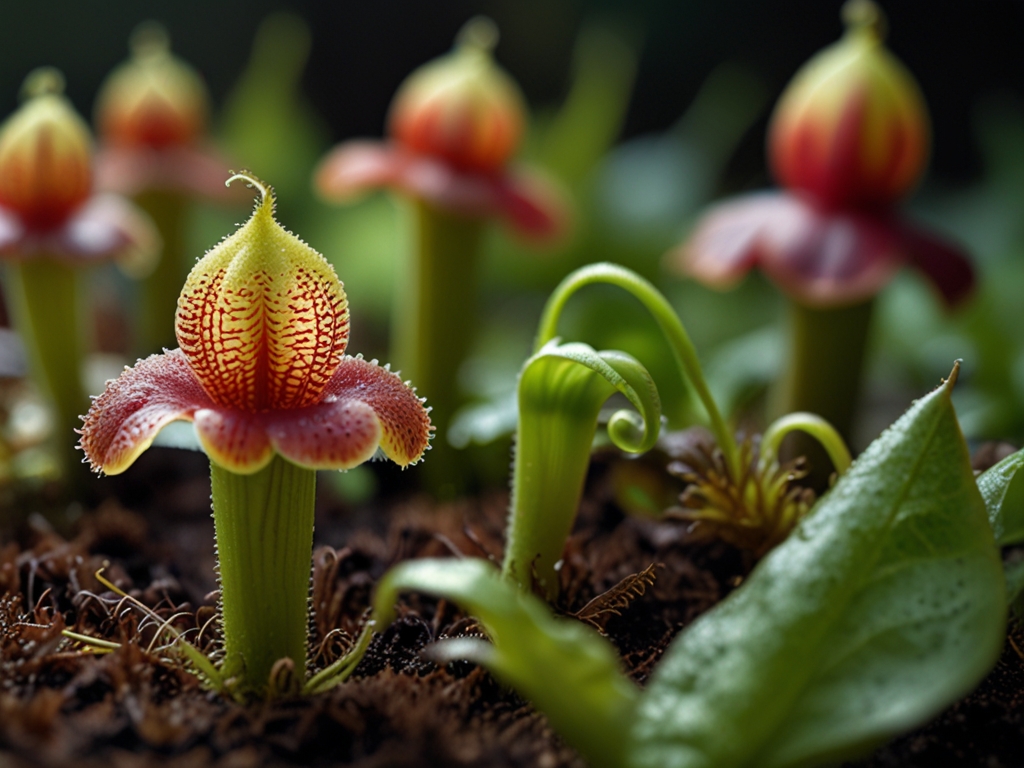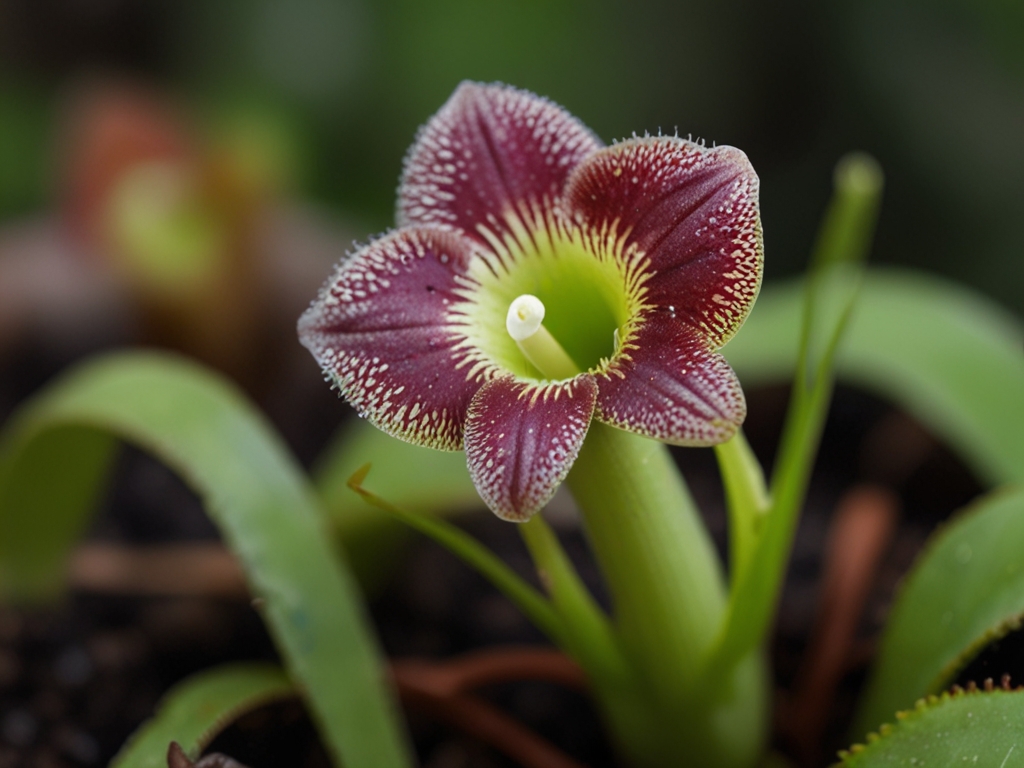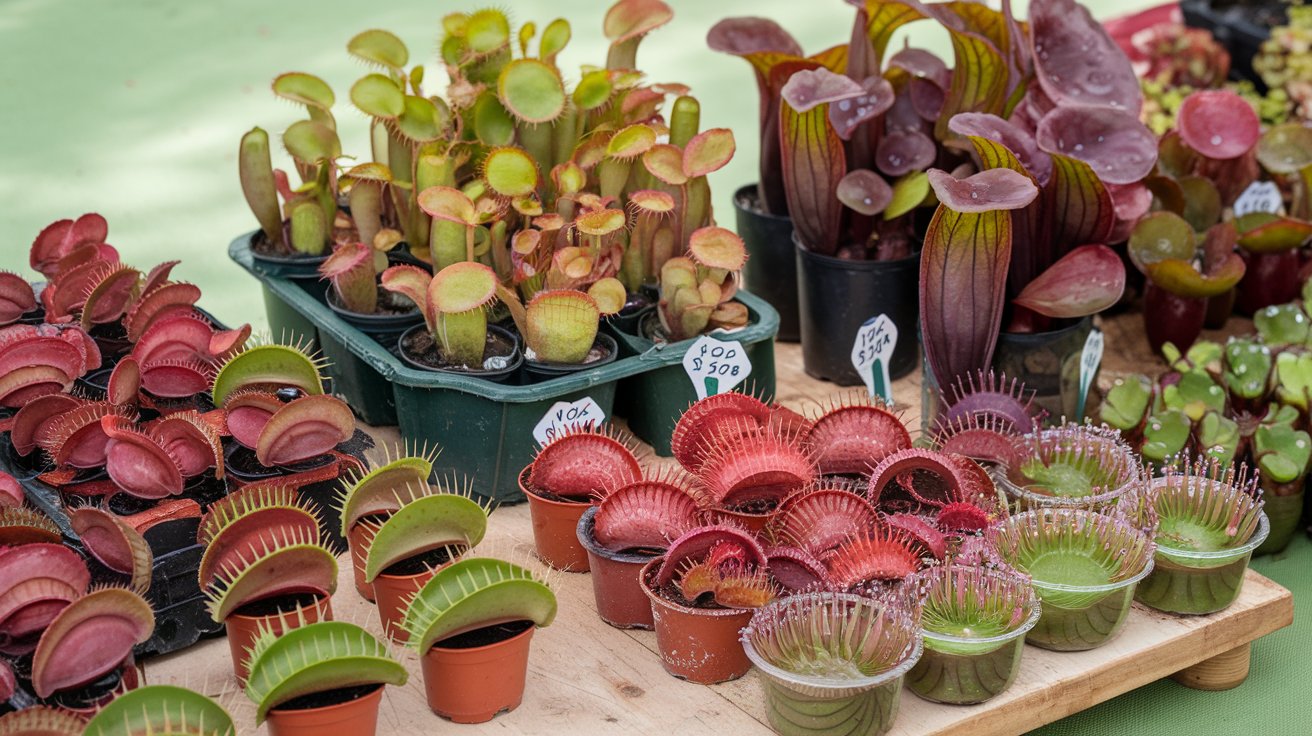Table of Contents
Introduction
Carnivorous plants offer a unique way to deliver a hint of nature’s wild side into your own home. Known for his or her charming capability to capture and digest insects, those vegetation have intrigued plant fans and scientists alike for hundreds of years. In this manual, we’ll discover the entirety you want to realize about buying, growing, and worrying for carnivorous plant life, from the beginner-pleasant Venus flytrap to wonderful pitcher plants. Whether you’re a first-time consumer or a seasoned fanatic, find out what makes these vegetation so special and the way you could preserve them thriving interior or outside.
1. What are Carnivorous Plants?
Carnivorous plants are particular, flowering plant life that have advanced to seize and digest small bugs and different prey to attain critical nutrients. Found in nutrient-negative environments like loos and marshes, these flowers developed mechanisms to supplement their diet through trapping insects. Each species has its own fascinating manner of catching prey, whether it’s the snap-trap of the Venus flytrap or the sticky dew of sundews.
2. Why Buy Carnivorous Plants?
Growing carnivorous flowers at home presents numerous advantages past their novelty. These plants add an extraordinary contact on your indoor or out of doors garden and function a natural form of pest manage, catching bugs like flies and mosquitoes. Additionally, caring for carnivorous plants may be profitable as they require specific attention, supplying a arms-on manner to interact with nature.
3. Types of Carnivorous Plants for Sale
Explore some famous forms of carnivorous plant life which can be usually to be had on the market:
- Venus Flytrap: Known for its iconic snapping traps that near around unsuspecting bugs.
- Pitcher Plants (Nepenthes & Sarracenia): Feature tall, tube-like leaves that entice bugs to their digestive fluids.
- Sundews (Drosera): Have sticky glandular hairs that ensnare insects, curling round them for digestion.
- Bladderworts (Utricularia): Aquatic carnivorous vegetation with tiny bladder traps that suction small organisms.
- Butterworts (Pinguicula): Use sticky leaves to capture prey, powerful at controlling small flies indoors.
4. Where to Buy Carnivorous Plants
You can locate carnivorous flowers from numerous online marketplaces and specialized plant nurseries. Ensure you purchase from a reputable supplier who specialises in carnivorous flowers to get healthy, properly-cared-for specimens. Some famous assets consist of botanical gardens and on line shops devoted to specific vegetation.
5. Factors to Consider When Buying Carnivorous Plants
When purchasing carnivorous vegetation, bear in mind a few key factors to make certain you make the pleasant desire to your environment and lifestyle:
- Climate Suitability: Choose vegetation which could thrive to your climate, in particular if you plan to grow them outdoors.
- Plant Maturity and Size: Younger vegetation may require extra sensitive care, whereas mature plant life are regularly simpler to deal with.
- Seller Reputation: Ensure the vendor has a very good popularity for best flowers and proper delivery practices.
6. How to Care for Carnivorous Plants

Each type of carnivorous plant has precise care desires, however here are preferred suggestions for preserving them healthful.
Lighting Requirements
Most carnivorous flowers thrive in shiny, indirect daylight. Venus flytraps and sundews require a few hours of direct sunlight every day, at the same time as pitcher flowers regularly opt for filtered light.
Soil and Potting Mix
Carnivorous plants want nutrient-terrible, acidic soil. Avoid fashionable potting soil and alternatively use a mix of peat moss and perlite or sand.
Three Watering Needs
Use most effective distilled or rainwater, as faucet water’s minerals can harm these flowers. Keep the soil continuously wet, however keep away from waterlogging.
Temperature and Humidity
Most carnivorous plants prefer heat, humid conditions. If your property is dry, remember the usage of a humidity tray or misting the vegetation lightly.
Five Feeding Your Carnivorous Plants
These vegetation generally capture their personal meals, but if saved interior, you can once in a while provide small insects. Avoid feeding them meat or other human foods.
Common Pests and Diseases
Common pests include aphids and spider mites. Use natural pest manipulate strategies like neem oil if important.
7. Best Carnivorous Plants for Beginners

For those new to carnivorous plants, some types are simpler to take care of than others:
- Venus Flytrap: A conventional choice for novices.
- Sundew (Drosera capensis): Hardy and quick to seize prey.
- Butterwort (Pinguicula): Low-maintenance and nicely-appropriate for indoor environments.
eight. Exotic and Rare Carnivorous Plants for Enthusiasts
For skilled growers, exploring rare species can be profitable. Some unusual varieties, which includes Nepenthes rajah (a form of pitcher plant) and sure sundews, require precise care situations. Consider searching for guidance from specialised dealers and horticultural experts.
9. Common Mistakes and How to Avoid Them
Even skilled growers can make errors with carnivorous plants. Here are some not unusual pitfalls:
- Overwatering: Carnivorous plant life require moist, now not waterlogged, soil.
- Using the Wrong Soil: Nutrient-wealthy soil can damage them.
- Incorrect Lighting or Feeding: Not presenting enough mild or overfeeding can prevent their increase.
10. Indoor Carnivorous Plants vs. Outdoor: Pros and Cons
Growing carnivorous plant life interior protects them from pests, but it calls for cautious attention to light and humidity. Outdoor cultivation permits natural insect capture however may additionally expose flora to negative climate.
11. Creating a Suitable Environment for Carnivorous Plants Indoors
Creating an ideal indoor environment includes:
Choosing the Right Pot and Soil
Choose pots with drainage holes and fill them with an acidic, nutrient-bad mix.
eleven.2 Building a DIY Terrarium for Carnivorous Plants
Terrariums assist manage humidity and temperature. Use a clear field and make sure airflow to prevent mildew.
12. Frequently Asked Questions (FAQs)
Q: How regularly should I feed my carnivorous plant?
A: Most carnivorous plants seize their own meals. If indoors, feed them once each two weeks with small bugs.
Q: Can carnivorous vegetation grow without sunlight?
A: No, most want vivid, oblique daylight for electricity. Use a grow mild if herbal light is inadequate.
Q: Are carnivorous plants safe for pets?
A: Yes, they may be typically safe, but maintain larger pets from demanding them.
Q: Do carnivorous flora require unique soil?
A: Yes, nutrient-negative, acidic soil is essential for healthy increase.
Q: Where is the quality place to keep carnivorous plants indoors?
A: A sunny windowsill or a room with vivid, oblique light works properly.
Conclusion
Carnivorous plants offer a unique and rewarding gardening experience, combining beauty and function in one fascinating package. By following the care tips and choosing plants that suit your environment, you can enjoy the wonders of these insect-eating plants in your home or garden

